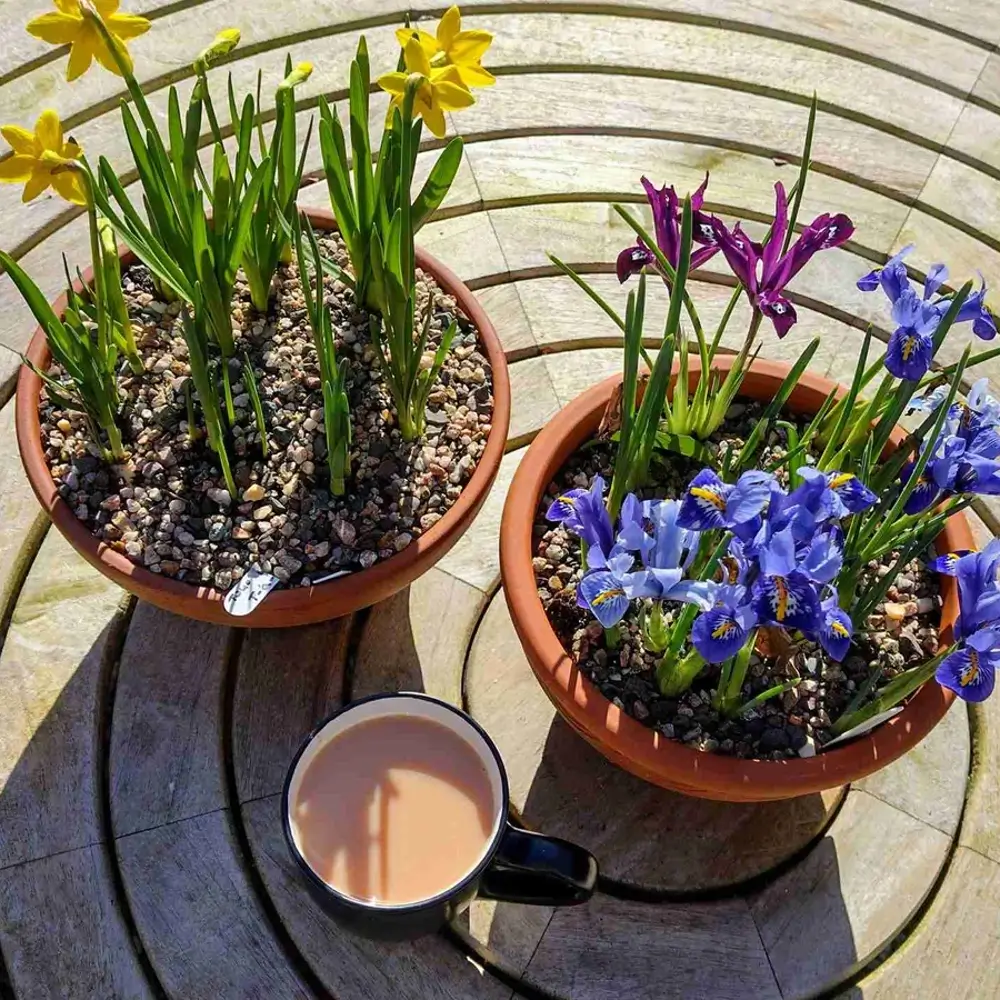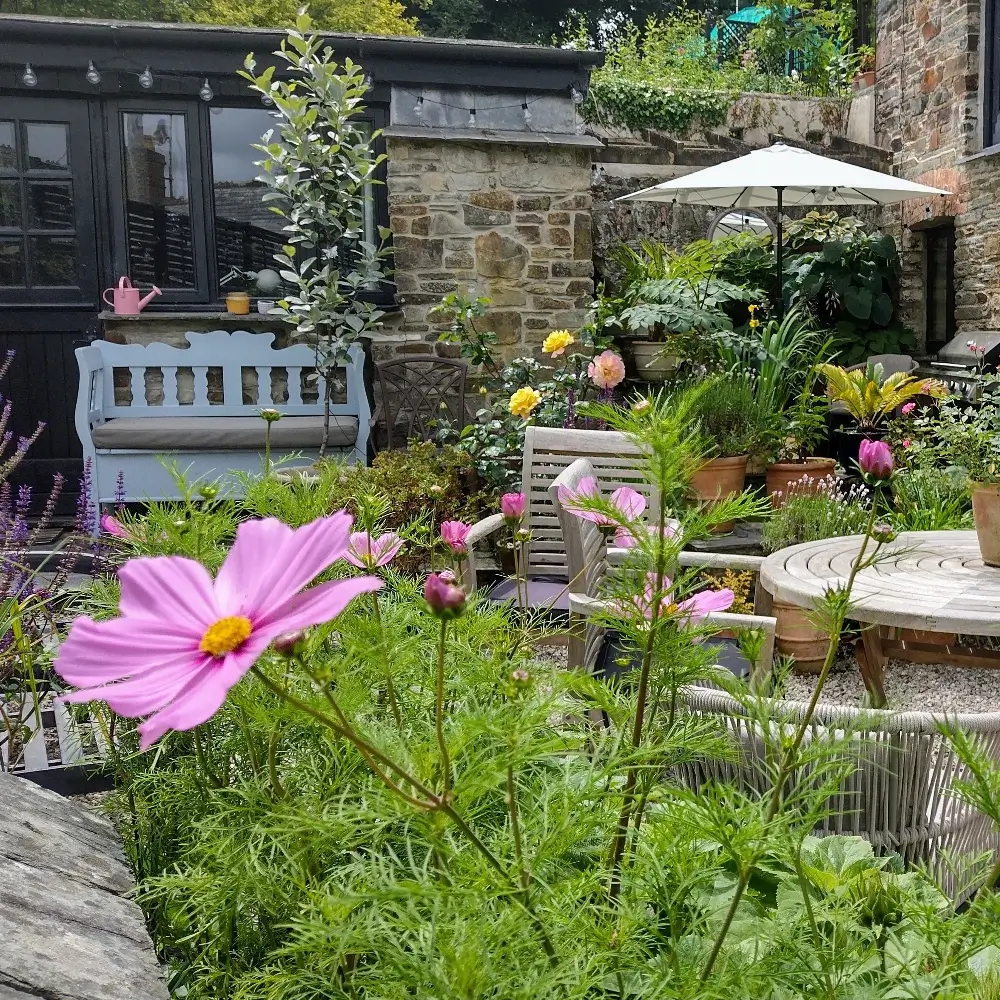How we Grow
and Sell

Our Labour of Love
What we grow, how we grow, the decisions we take about when, what and how to sell – all of these decisions are informed by our passion for growing plants, and for sharing that love by finding our plants new homes – with you.
In the sections below we explain a little more about the way these decisions impact what we do at the nursery. We hope you might find this interesting (we do, but we’re unashamedly biased!).
Below you can read more about how we propagate and grow plants for sale, as well as what we grow now and are growing for the future.
By explaining what we do at the nursery in a little more detail we also think it will clarify what you’re getting when you buy plants from us, to help ensure you’re as happy with your new plants as you possibly can be!
For those wanting to know more about the plants we have for sale you may find the information about the sizes of plants we sell, as well as some of our seasonal cultural practices and what this might mean for the plants you’re buying from us.


How we Grow
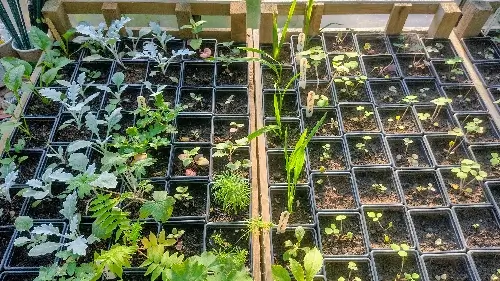

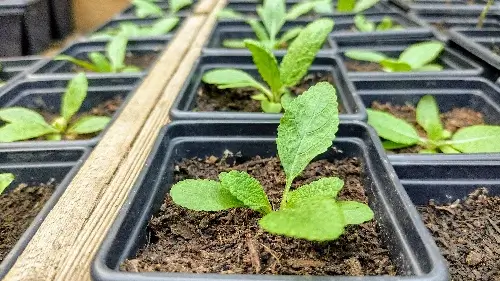
We aim wherever possible to propagate and grow from our own stock. We routinely collect seeds and propagation material from stock plants we own, plants that we have grown and understand. Knowing the aptitudes and qualities of these plants means we have the best chance possible of producing quality plants from the material we take from those plants.
Propagating from our own stock also helps us provide the best advice and support we can to our customers. Our conditions may not be identical, but when you buy plants from us you can be sure that we as gardeners have grown, come to love, and yes, been frustrated by (and watched die) the same plants we’re selling.
We use a range of propagation techniques, depending on the plant. Some we find are best from seed, others are best from various forms of cuttings or divisions. Not every plant is as easy to propagate, or to develop from a young rooted cutting to a sellable plant. Though we try to keep our pricing consistent, please be aware plants that need more love and attention to propagate and develop can mean higher prices.
There are some plants that we don’t propagate ourselves. These tend to be plants that either require specialist propagation techniques or facilities, or plants that are protected by Plant Breeders Rights. In these instances we bring plants in that are very young, and grow them on under glass and harden them off in our own conditions before putting them up for sale.


Our job on the nursery is principally to grow healthy, productive plants to the best of our ability and knowledge. There can be a lot of labour involved in this, even for a small stock, as containerised plants by definition need a lot of care! This work can be broken down into three areas:
Maintaining the resources plants need: Plants always need sufficient access to water, nutrients, light and warmth. What is sufficient, of course, will vary from plant to plant and from season to season. Because nursery plants are grown in containers these resources run out frequently – unlike plants grown in the ground where roots can run deeper underground to search out more resources.
Maintaining momentum when plants are in growth: Plants naturally want to grow and inevitably don’t enjoy the stunting conditions of containers. We find if you don’t pot plants on in time you lose their growing momentum, and they may never fully recover their lost vigour once they’ve been checked. On the flip side, potting on plants that aren’t ready for it can risk leaving them drowning in soggy compost, so it’s a fine balance!
Maintaining the health of plants: Preventative cultural practices are key here – maintaining sufficient air around plants and keeping growing surfaces and working areas clean. This often means cutting back plants at several points in the growing season to limit overcrowding, or to remove dead material from the plants that is more vulnerable to disease. This is particularly important in late summer, as the temperature cools and the weather becomes wetter, perfect conditions for diseases to flourish in. On the other hand the pests tend to like the fresh growth, so we also have to pay special attention to young vigorous plants. As any gardener knows, pests have evolved to be at their most numerous and active in spring, when plants are at their most vigorous.
Open Staging
Our preference is wherever possible to grow plants in the open air. That’s because we believe in growing plants ‘hard’ because we want our plants to adapt quickly to the new homes they find themselves in, and because we think that plants grown this way are inevitably more healthy and robust. In nature plants don’t grow under cover, and so they grow to adapt to extremes of weather and variations in light levels.
Plants exclusively grown under protection can be excessively ‘sappy’, and don’t fare well when moved into open air environments unless they are gradually accustomed to it by a process of ‘hardening off’. Covered environments also provide the best habitats for pests, which flourish in an unbalanced way when protected from predators and extreme weathers. Diseases too can flourish under protection where air flow is restricted – even the best ventilation system never equates to life in the open air!
Greenhouse Growing
This all said, there is always a place for protected environments when growing in a nursery setting. When very small every plant is particularly vulnerable to predation, disease and climatic challenges – in nature plants rely on sheer strength of numbers to overcome these challenges. Most plants produce so many seeds because they expect the percentage of seeds that become new healthy plants to be extremely small. If growers were to take a similar approach all the time the business would become so uneconomical there would be no business in it – it simply isn’t feasible to pot on thousands of seedlings, leave them in the open air, and then try to make a living selling the few seedlings that make it!
Greenhouse conditions provide protection from a lot of these threats, and allow us to control the environment in a way we simply can’t in the open air. Though we never heat our greenhouse, we do use insulation in the winter and shading in the summer, and can of course maintain more constant moisture levels under protection from the rain. For that reason we do most of our sowing, propagation work and growing on of seedlings and rooted cuttings under greenhouse conditions. These plants get moved on as soon as they are established enough to survive either in the open air or in our polytunnels.
Polytunnel Growing
Polytunnels offer a sort of half way house experience for our plants. They are a much larger covered space than our greenhouse, and this means that the temperature is more evenly spread than can be the case in a greenhouse and there is better air flow. The nature of the plastic covering also means that light is diffusely spread. This makes for an excellent growing environment, particularly at the beginning of the season when light levels are lower. We use polytunnels in late winter to bring plants out of dormancy and as a staging post for younger plants before they end up in the open staging areas.
The other use we have for polytunnels is for winter protection. Polytunnels offer minimum protection from the cold – plants that live here in winter have to be able to take some of that. But polytunnels are excellent from protecting plants from winter’s icy winds and heavy rains. It’s the combination of wet and cold winds, more than the raw temperature, that does most damage to plants, particularly containerised plants where water can drain away as easily as in the ground. Winter rain is a particular threat as it comes at a time when plants are dormant and so not using water to photosynthesise, leaving plants vulnerable to root rot.
What we feel is missing from the ‘right plant right place’ way of thinking is a more forward-looking approach that takes account of the way our climate and growing conditions are changing and the growing need to manage our use of resources and our minimise our carbon footprint.

How we Sell
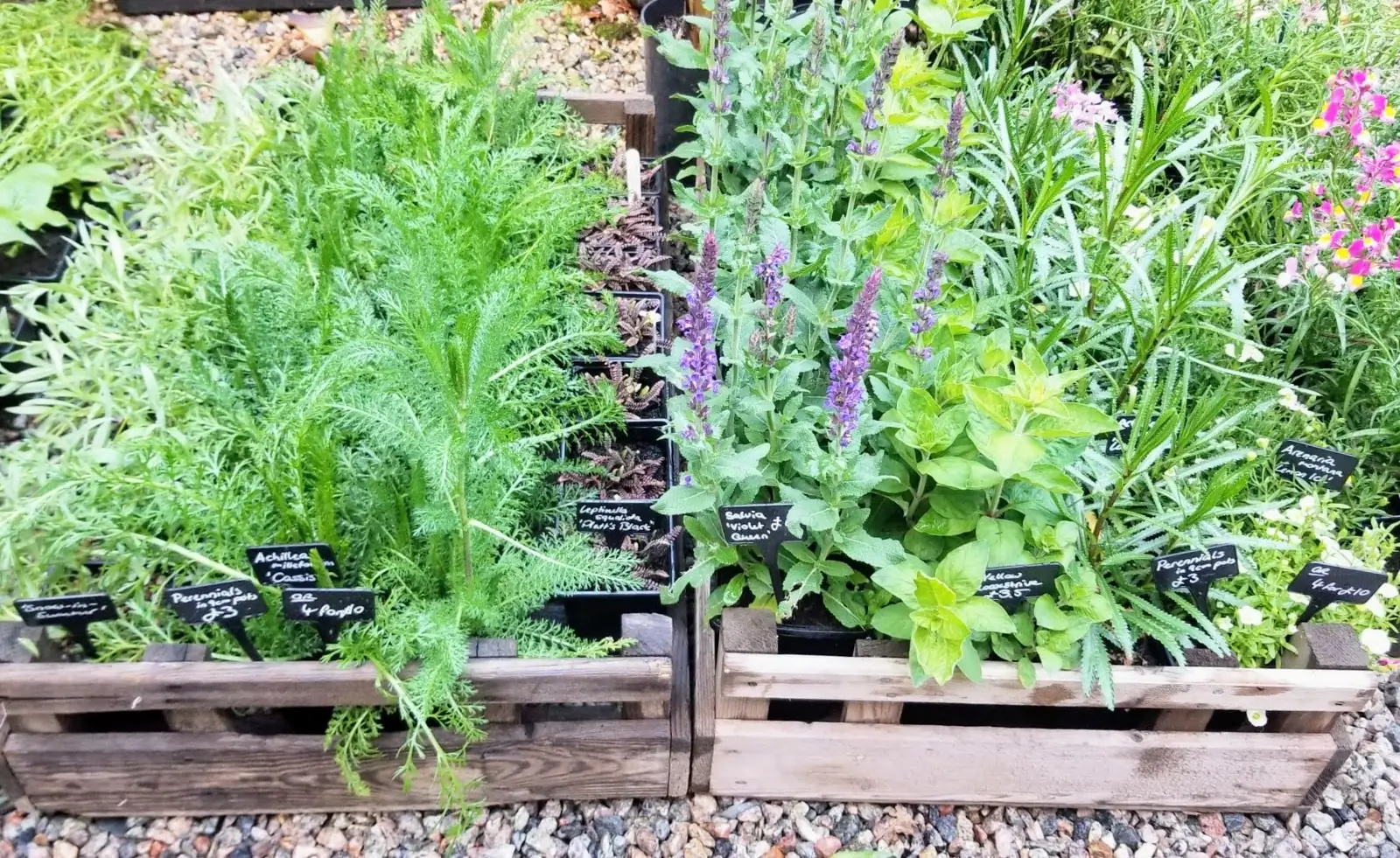
We are a very young nursery and as such our initial focus has been on growing a small range of quality plants – plants that we have direct experience of growing ourselves in our gardens and can give the very best advice about.
This model will remain key to the decisions we make about how to extend this range – we are gardeners ourselves and as we experiment and learn ourselves we want to find ways to translate these experiences into what we do at the nursery.
Our medium-term goal is to establish a specialism in adaptable and survivable plants. In part, our commitment to this has been influenced by that well-travelled zeitgeist of contemporary garden design – the move towards naturalistic planting schemes and plant choices that eschew rigid annual planting schemes and plant choices in favour of less contrived and more enduring perennials.
Our thinking is also underpinned by the essence of ‘right plant right place’ thinking – something more recently taken forwards by German growers and designers under the Lebensbereiche ( garden habitats) philosophy. You can read a little more of this here.
So we want to go further, by developing a specialism of plants that will not only flourish in the variations of our changing climate – which increasingly includes extremes – but that will prove to be durable and lasting, and help us to the most of our precious time and resources.
In practice that will mean helping to rehabilitate often overlooked but resilient perennials like persicarias and teucriums, as well as shrubs that give a long season of interest but will come through whatever the seasons throw at them.
We aim to sell our plants in a number of different sizes, as we know as gardeners ourselves that sometimes you want something that’s cheaper and are happier to wait until it has grown on a little before planting in its final spot, while other times you’re happier to pay a little more to ensure you get a plant that performs that same growing season.
Of course, bigger isn’t always better! Some plants, such as low-growing alpines, are sold in smaller sizes because they don’t grow as large, while bulbs are sold in smaller sizes to give the customer maximum flexibility when it comes to deciding where to plant them.
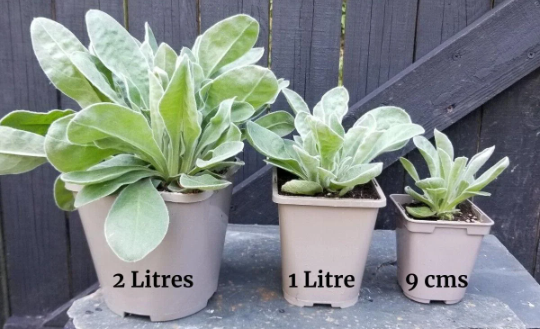
-
Herbaceous perennials - 1 & 2 litre containers
-
Alpines and succulents - 9cm & 1 litre containers
-
Shrubs and sub-shrubs - 2 litre containers
The cost of larger plants usually reflects that they are more mature, have been potted on often several times, and need more growing medium and feed to keep them flourishing.
Sizes & Plant Care

9cm Plants
Some plants in this size are ready to go into the ground or into a decorative pot, such as alpines. You can also grow them on yourself, though they may not grow much larger until they are in the ground.
For other plants sold in 9cm containers we recommend put them into a larger container and growing them on a little before putting them in their final locations. You may also wish to harden these plants off a little before putting them in their final locations as we grow younger plants under protection, particularly early or late in the growing season.

1 litre Plants
Plants sold in this size are generally considered ‘garden ready’ and can be planted out in their final locations once they arrive, though again some of these will have been recently grown under protection and will benefit from some hardening off, particularly if you’re planting them in full sun locations.
Because they’re generally still smaller than their 2 litre counterparts you may want to make sure they’re put in a spot where they won’t get crowded out quickly (particularly if planting in spring and early to mid summer where the other plants they’ll share space with are growing most actively.
Make sure to keep a close eye on them during periods of very cold weather (such as late spring or early autumn frosts – younger plants are never as hardy as more mature versions of the same plant), and water regularly, particularly during dry spells, to settle them into their new homes.

2 litre Plants
These are the biggest plant size we sell currently as we find it isn’t practical to ship plants of larger sizes.
These plants are ready to be planted out when they arrive. They will have had some time growing in open staging, and will therefore be hardened off to a range of different weathers. However don’t forget again to keep an eye on them during cold and very dry/sunny spells.
If in doubt follow a basic rule of thumb – any plant, no matter what their size, will benefit from some TLC while it gets roots into the ground and acclimatises to its new environment and conditions!
The joy of plants is that they are never static, ever growing and changing as the seasons pass. It also means that when buying plants what the actual product looks like will vary depending on the time of year.
We do our best to include representative photographs of the plants on our website, but it simply isn’t possible to include photographs at every growing stage and instead we provide photographs and descriptions to give you an idea of how the plant should look when fully grown.
You might find it useful to think of buying plants from us as buying a rootstock – that is as something with potential that can be realised with the right treatment and care.
To help you know what to expect we think there are four things that will change with the time of year that you might want to be aware of when buying plants from us:
Availability
Our available stock changes as the seasons change. What we have for sale at any moment depends on the growth cycle of our plants and the weather conditions – we need to make sure our plants are sturdy enough and the weather is temperate enough to survive shipping. Our stock is usually much reduced in winter but increases from late winter onwards.
If you like what we do and are interested in buying from us, please do check back in from time to time to see whether we’ve new stock in that you might be interested in. As we grow we are also aiming to offer some seasonal specialities, such as pots of combined bulbs in the green that are ready for putting straight into decorative pots
Flowers
Most of us look forward to some form of flowering from our plants. When buying plants we’re often mindful of blooming times, as we have spots that need filling at particular times of the year.
However it’s important to remember that it can take pot-grown plants a year or so to settle into ‘normal’ flowering times. This is because the cycle of growth and care that potted plants have undergone before they are sold will have influenced the plant’s natural mechanisms that tell it when to bloom. Don’t be disheartened if you don’t get the performance you’d like in the first year of planting – as with all things to do with the garden, patience is key!

Size of Top Growth
Top-growth is the most visibly changeable part of a plant, and as such is impacted by the time of the season.
Plants bought in spring will usually have less top growth than one bought in mid or late summer (particularly herbaceous perennials that die back over winter and start again each spring).
The opposite is often the case later in the season. We cut many of our plants back in late summer to ensure they remain healthy. By mid to late summer stocks of plants on a nursery grown in containers can fill too much space – if we didn’t cut this growth back the over-crowded growing conditions would become breeding grounds for pests and diseases of all sorts. Don’t worry – they will regrow!

Roots
In many senses what you’re buying when you buy plants from a nursery is a rootstock full of vitality and potential. The size of that rootstock will reflect the maturity of the plant, and the amount of top growth it supports or will develop as the season progresses (in the case of herbaceous perennials).
Our nursery work always aims for the holy grail – a plant growing in its container that is neither so full of roots that it is pot-bound nor so under-potted that the roots can’t take up all the water the soil in the container absorbs.
We aim to sell our plants as the roots spread to the sides of the containers. But nursery growing is never a precise science, so don’t be put off if a plant looks a little under or over-potted. Just be ready to pot on or in the ground once its roots are filling the pot out.
Ultimately it’s good to remember that few plants, even with the very best of care, will thrive constrained in commercial growing containers. Almost all plants will grow bigger, fuller and perform much better given more space to grow in the ground or in larger decorative containers.
Plants are also often happier once they’re connected to the soil ecology in your garden rather than the relatively sterile growing conditions they have in commercial containers.

